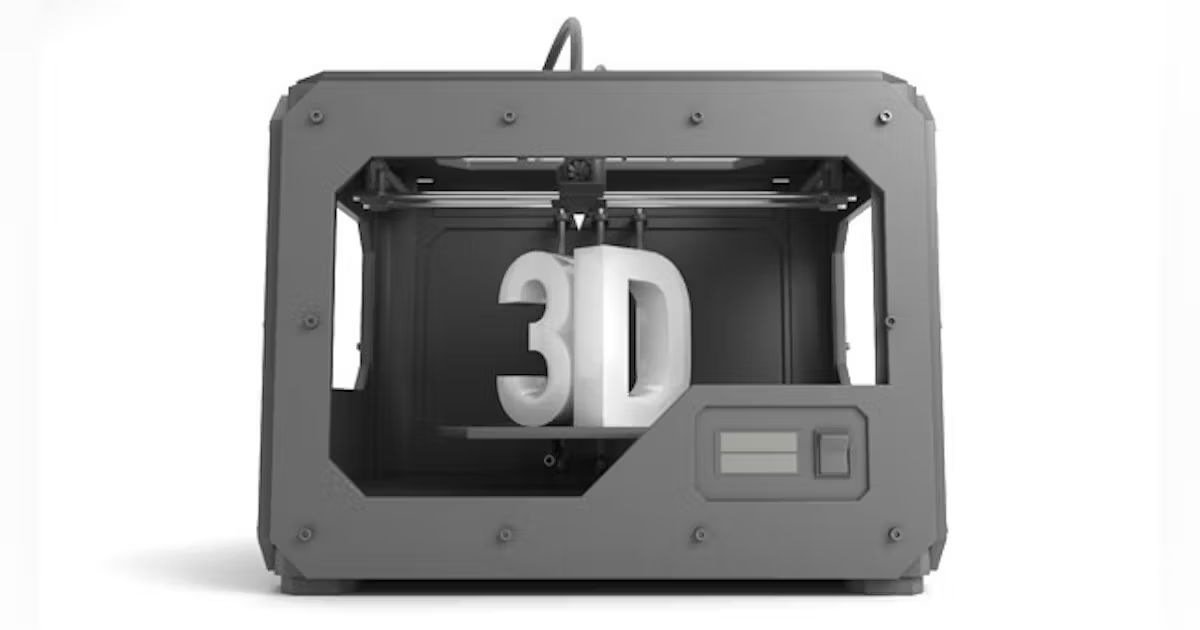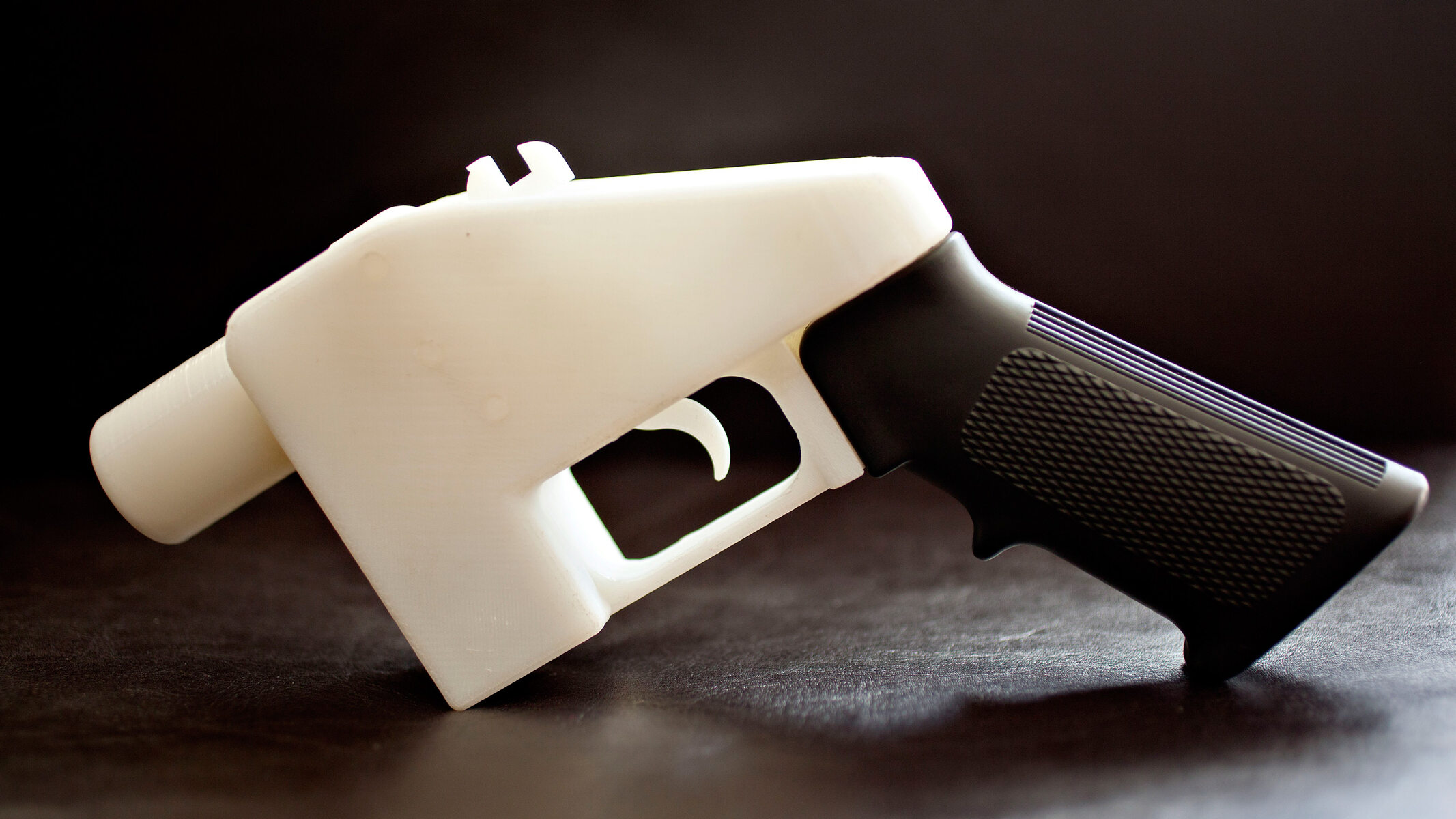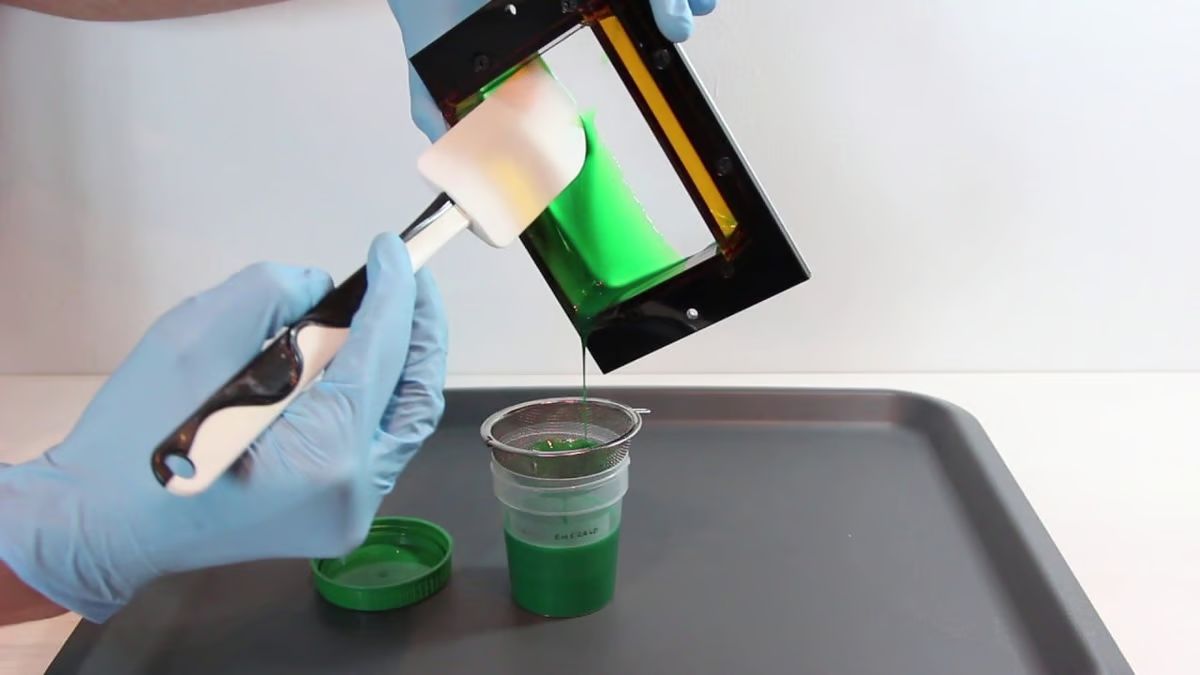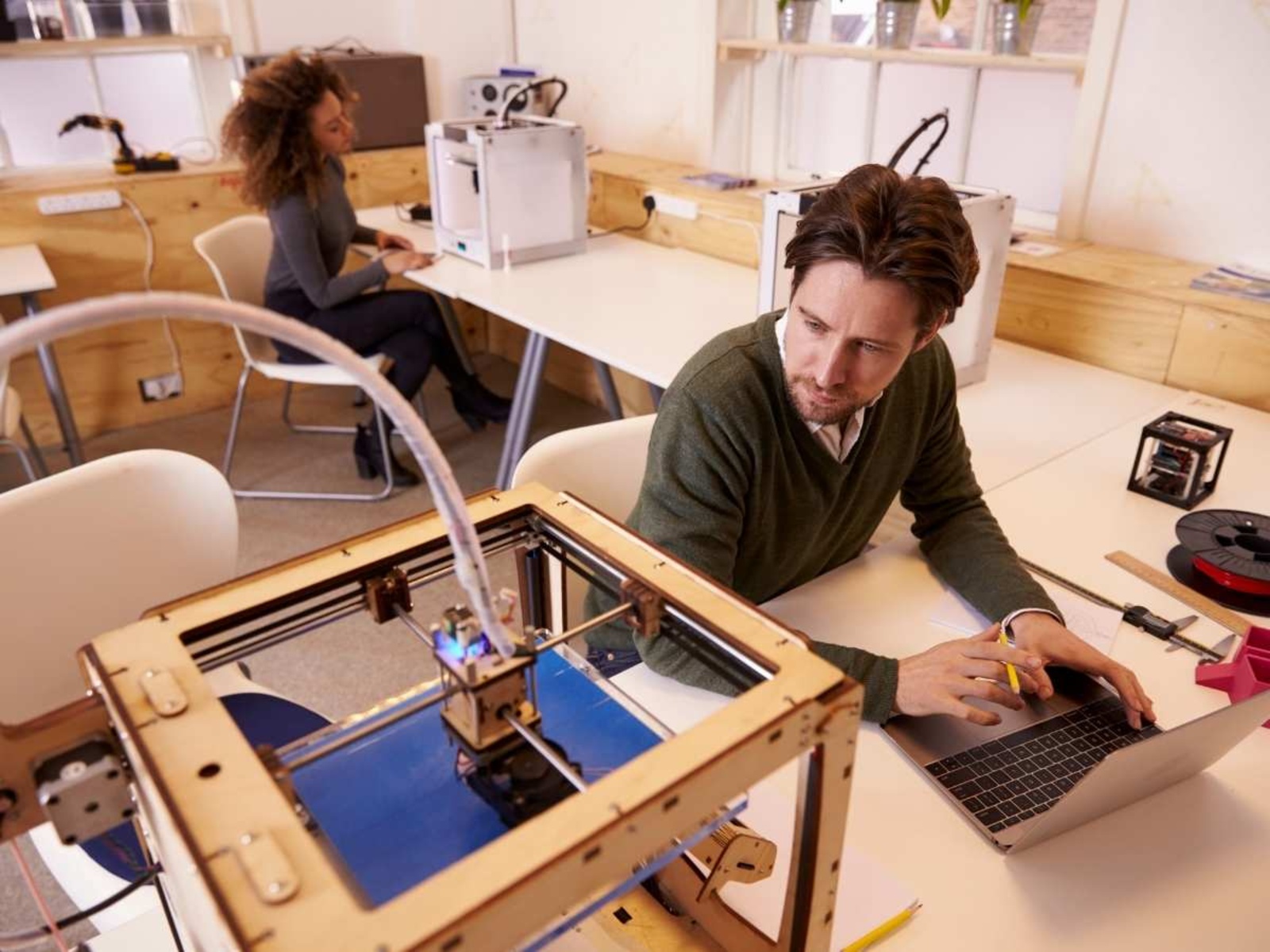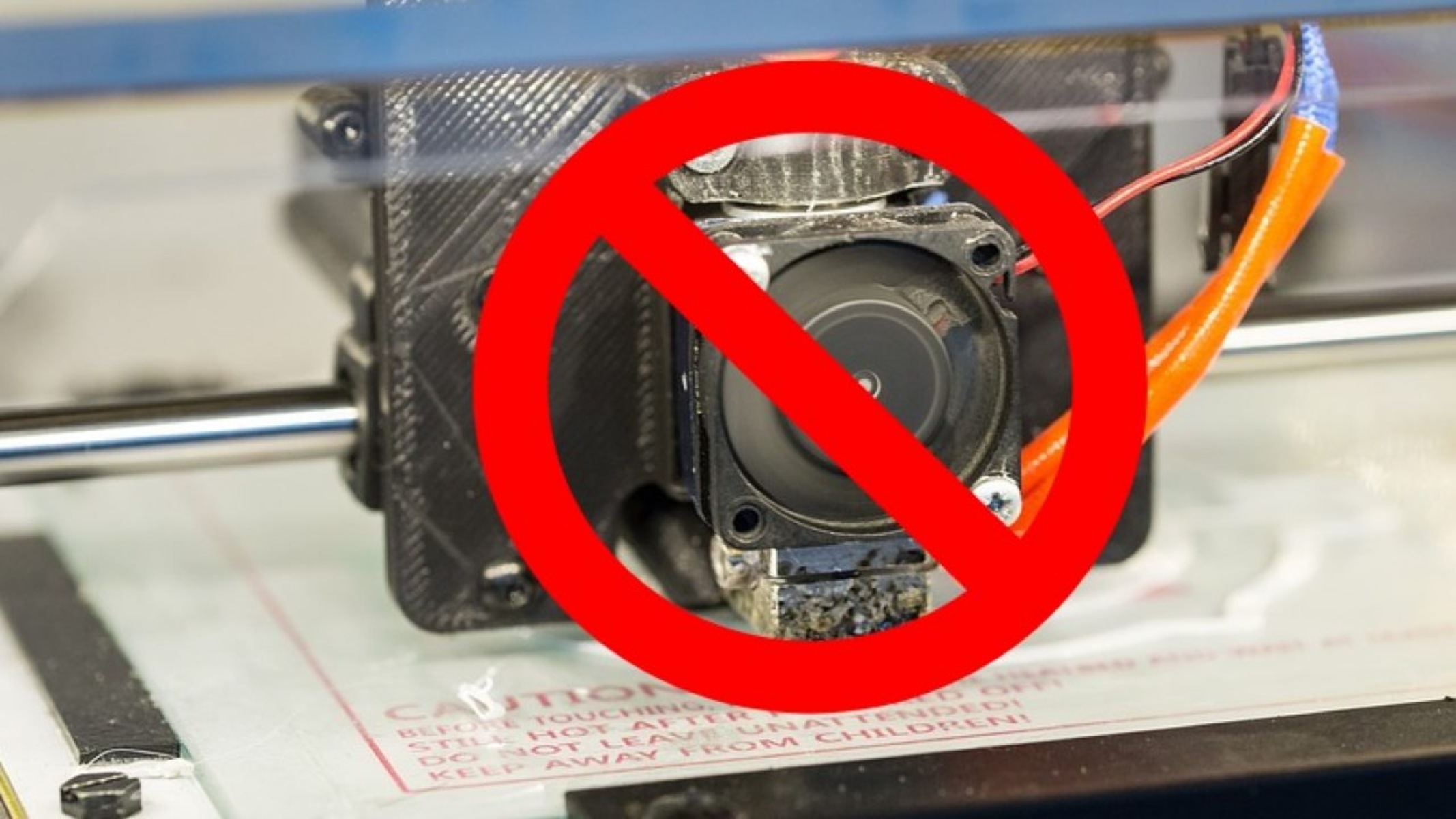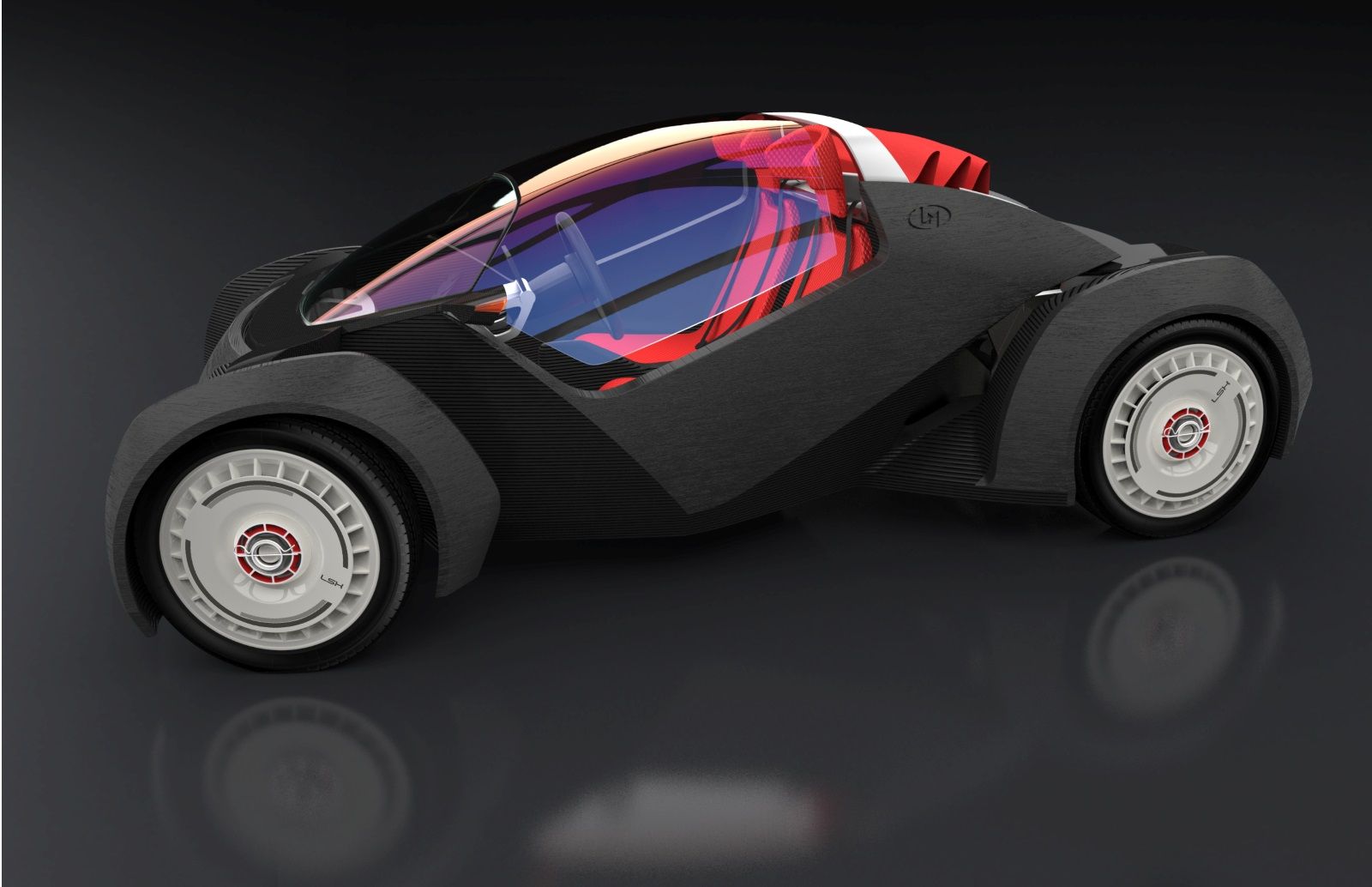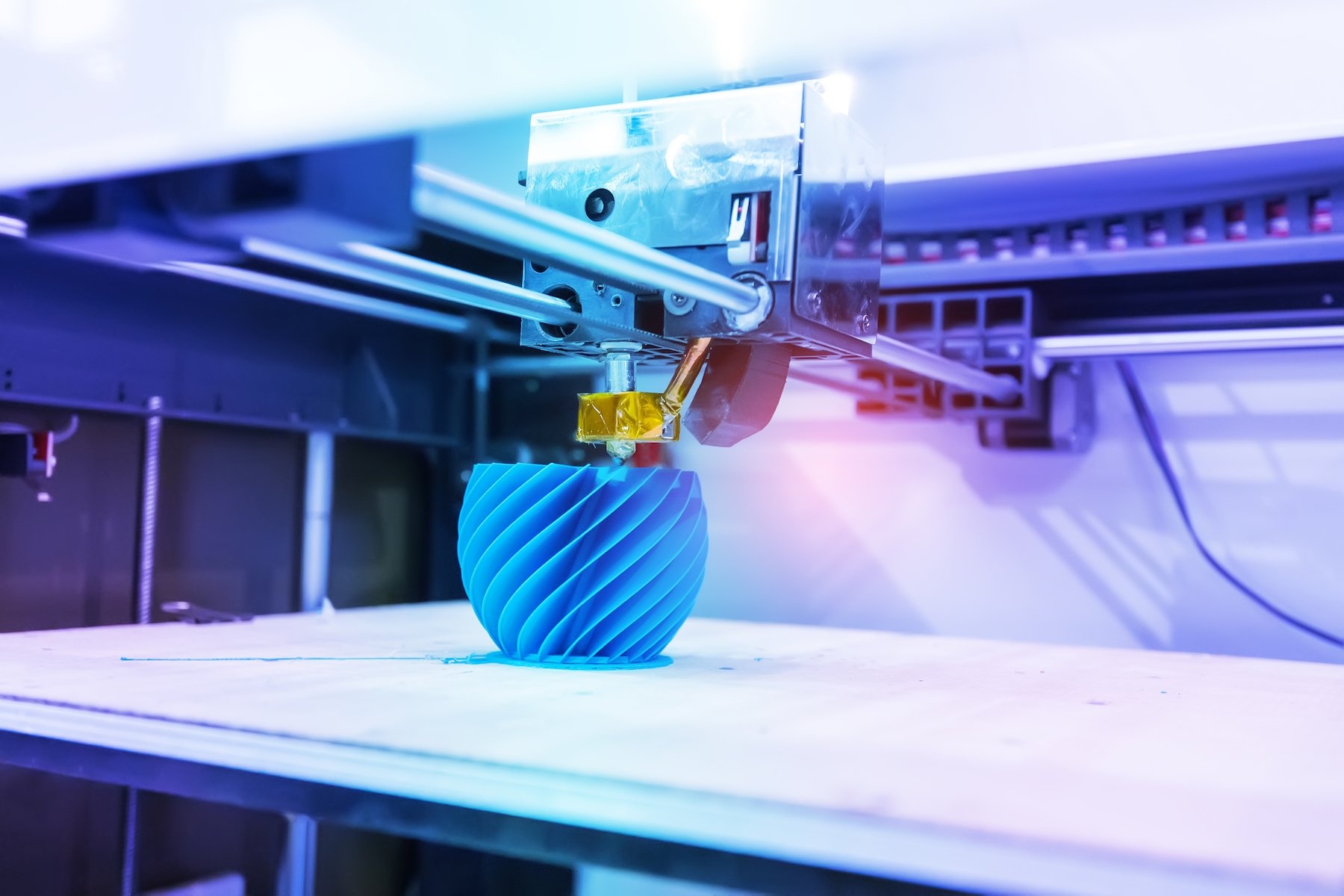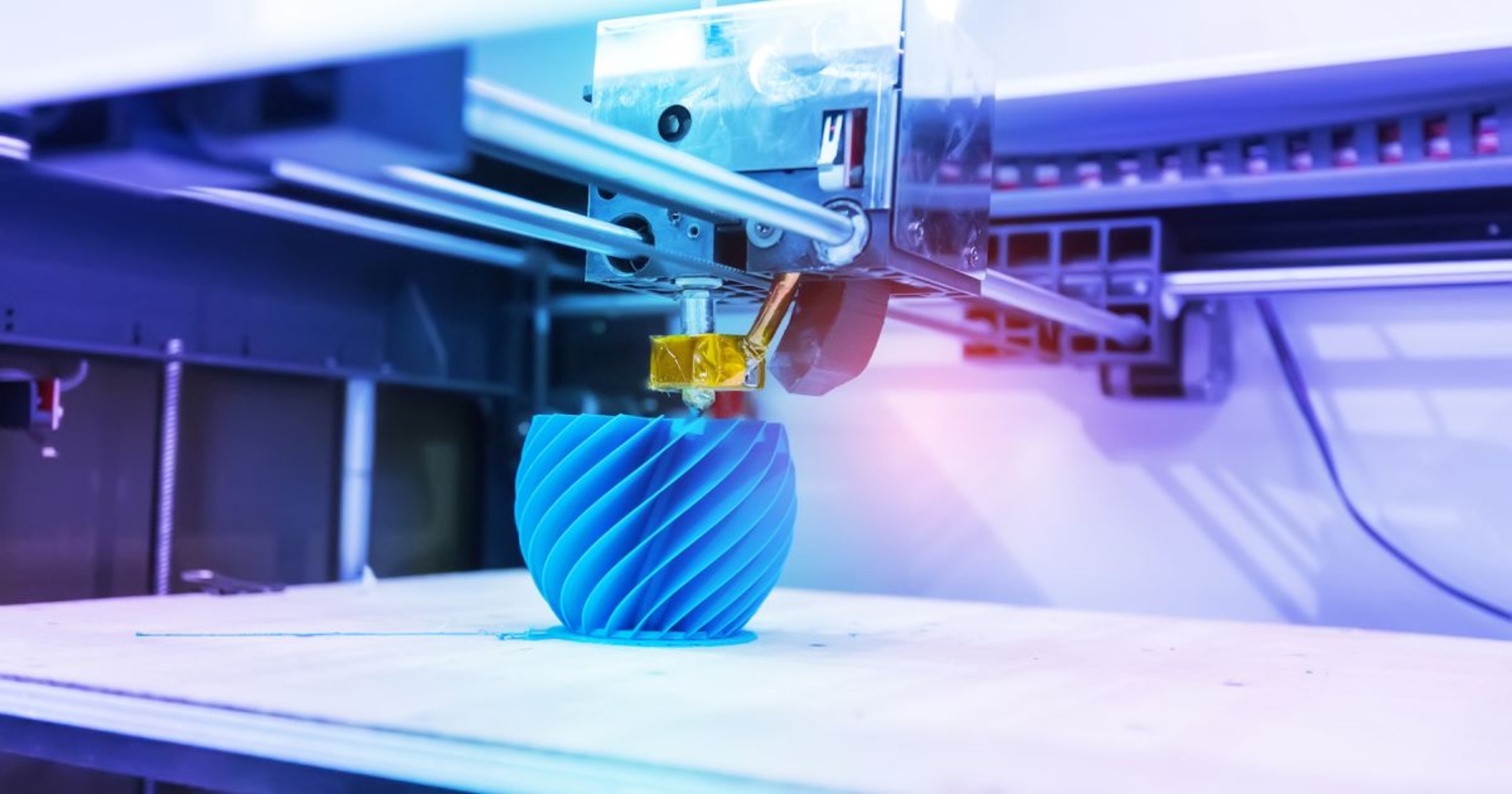Introduction
In the world of rapid technological advancements, 3D printing has emerged as an innovative technology with the potential to revolutionize various industries. With the ability to create three-dimensional objects from digital files, 3D printers have opened up new possibilities in manufacturing, prototyping, and even personal creations.
However, with this increasing accessibility and affordability of 3D printers, questions have arisen regarding what is legal to make with this technology. As with any emerging technology, the legal landscape surrounding 3D printing is still evolving. While it offers tremendous opportunities, there are certain limitations to ensure compliance with existing laws and regulations.
This article aims to provide an overview of what is considered legal to make with a 3D printer in the United States. It will explore various aspects, including intellectual property, personal use, the right to repair, privacy concerns, and specific limitations on the production of firearms, drugs, counterfeit goods, and obscene materials.
It is important to note that the information provided in this article is intended for informational purposes only and should not be construed as legal advice. Laws and regulations can vary by jurisdiction, so individuals should consult with legal professionals familiar with the specific laws of their country or region before engaging in any 3D printing activities.
Intellectual Property
When it comes to 3D printing, one of the primary concerns is intellectual property (IP) rights. Intellectual property refers to the legal rights granted to individuals or companies for their creations, which can be in the form of patents, trademarks, or copyrights.
Copyright is one of the most relevant IP rights in the context of 3D printing. It protects original artistic, literary, or creative works, such as sculptures, drawings, and designs. It is important to understand that creating a 3D printed replica of a copyrighted object without permission from the copyright holder may infringe upon their rights.
In addition to copyright, trademarks also play a role in 3D printing. Trademarks are used to protect brands and logos that distinguish the goods or services of one company from another. Therefore, reproducing trademarked logos or brand names without authorization could lead to trademark infringement.
Lastly, patents grant inventors the exclusive rights to their inventions for a limited period. While a 3D printer itself may not infringe on any patents, creating objects based on patented designs without permission could potentially infringe on patent rights.
To ensure compliance with intellectual property laws, it is advisable to only 3D print objects for which you hold the necessary rights or have obtained explicit permission from the rights holder. Additionally, many websites and platforms provide access to designs that are explicitly licensed for free or creative commons use, thereby ensuring legal usage.
It is important to stay up-to-date with the evolving regulations and case law surrounding intellectual property and 3D printing. Consulting with legal professionals who specialize in intellectual property can provide further clarity and guidance in navigating this complex area of law.
Copyright
Copyright is an essential component of intellectual property law that protects the original expression of an idea in a tangible form. In the context of 3D printing, copyright can come into play when creating and reproducing objects based on copyrighted designs or artistic works.
It is crucial to understand that copyright protection extends to a wide range of creative works, including sculptures, paintings, drawings, and other artistic creations. Therefore, if you plan on 3D printing an object that is a reproduction or adaptation of a copyrighted work, you may be infringing upon the rights of the copyright holder.
However, it is worth noting that copyright law includes certain exceptions and limitations. One such exception is the concept of “fair use,” which allows for the use of copyrighted material without permission under certain circumstances, such as for educational or transformative purposes. The application of fair use in the context of 3D printing is an area that is still being explored and defined by courts.
To avoid potential copyright infringement, it is advisable to seek permission from the copyright holder before reproducing or distributing their copyrighted work using a 3D printer. Many companies and artists have licenses or specific terms of use for their designs that allow for their reproduction or modification for personal or commercial purposes. By obtaining proper authorization, you can ensure that your 3D printing activities are within the boundaries of the law.
Furthermore, it is crucial to be aware of online platforms and repositories that offer 3D printable designs. While some websites provide free access to designs that are explicitly licensed for open use, others may host copyrighted content without the necessary permissions. Always verify the licensing terms and usage rights before using any design files obtained from these platforms.
As 3D printing technology continues to advance and become more accessible, the intersection between copyright law and 3D printing will likely become more intricate. Staying informed about the evolving regulations and seeking legal advice when necessary can help ensure compliance with copyright laws and protect the rights of creators in the digital age.
Trademarks
In the realm of intellectual property, trademarks play a significant role in protecting brands, logos, and distinctive marks that designate the source of goods or services. When it comes to 3D printing, it is important to understand the implications of trademark law in order to avoid infringing upon established trademarks.
Trademark infringement occurs when a third party uses a mark that is confusingly similar to a registered trademark, leading to consumer confusion about the origin of goods or services. This can include reproducing trademarked logos or brand names on 3D printed objects without proper authorization.
One important aspect to consider is the commercial nature of the use. If you are using a trademarked logo or brand name for personal use, it may be considered less likely to infringe upon trademark rights. However, if you plan on selling or distributing 3D printed objects bearing a trademarked logo or brand name, it is essential to obtain the necessary permissions or licenses to avoid potential trademark infringement.
Furthermore, it is important to note that not all trademarks are registered. Common law trademarks, which are protected through use, can also be enforceable. Therefore, it is crucial to conduct thorough research and ensure that the designs you plan to print do not infringe upon any existing trademarks, regardless of their registration status.
When it comes to online platforms and repositories offering 3D printable designs, it is essential to exercise caution. Some platforms have guidelines in place to prevent the upload of trademarked content without proper authorization. However, it is still important for users to verify the rights and permissions associated with any designs they obtain from these platforms.
By being mindful of trademark rights and seeking permission when necessary, 3D printing enthusiasts can ensure that they are operating within the boundaries of the law. Consulting with attorneys who specialize in trademark law can provide further guidance and clarity in navigating trademark issues in the context of 3D printing.
Patents
Patents are another important element of intellectual property that come into play when considering what is legal to make with a 3D printer. Patents grant inventors the exclusive rights to their inventions for a limited period, preventing others from making, using, or selling the patented invention without permission.
While the use of a 3D printer itself may not directly infringe on any existing patents, creating objects based on patented designs without authorization may potentially infringe on patent rights. It is crucial to be aware of patented designs and refrain from reproducing them without obtaining the necessary permissions.
Identifying whether a design is subject to patent protection can be challenging, as not all patented designs are easily identifiable. It is advisable to conduct a thorough search to determine whether a particular design may be subject to patent protection before printing it. Consulting with legal professionals who specialize in patent law can also provide valuable guidance in navigating this complex area.
In some cases, patent holders may offer licenses or agreements that allow individuals to print objects based on their patented designs. It is important to respect these agreements and ensure compliance with the terms and conditions set forth by the patent holder.
Additionally, it is essential to stay informed about the evolving landscape of 3D printing and patents. As the technology advances, new patents are being granted, and new rules and regulations may come into effect. Regularly monitoring patent databases and seeking advice from professionals can help ensure that your 3D printing activities align with existing patent laws.
While it is crucial to respect patented designs and obtain proper authorization when necessary, it is also worth noting that there are instances where 3D printing can be beneficial in terms of patent law. For example, 3D printing can be used in the context of prototyping and researching new innovations, as long as it does not involve unauthorized replication or commercial use.
By understanding and complying with patent laws, individuals can harness the potential of 3D printing while respecting the rights of patent holders. It is always recommended to seek legal advice when dealing with complex patent-related issues to ensure full compliance with the law.
Personal Use
One area of 3D printing that often raises questions is the concept of personal use. Personal use refers to the creation of 3D printed objects for individual or non-commercial purposes. While personal use is generally allowed and not subject to significant legal restrictions, there are a few important factors to consider.
The first factor to keep in mind is the intellectual property rights associated with the object being printed. If the object is protected by copyright, trademark, or patent, it is essential to ensure that you have the necessary rights or permissions to reproduce it, even for personal use. As discussed earlier, infringing on these rights can lead to legal consequences.
Additionally, it is important to note that personal use does not extend to the production of certain prohibited items, such as weapons, drugs, or counterfeit goods. While the rules and regulations surrounding these items may vary depending on the jurisdiction, it is crucial to familiarize yourself with local laws and abide by them when engaging in 3D printing for personal use.
Another consideration is whether the object being printed complies with safety regulations and does not impose any harm or risk to individuals or their property. For example, if you are printing functional objects like toys or tools, it is essential to ensure that they are safe to use and do not pose any potential hazards.
Furthermore, it is important to be mindful of the impact that personal use 3D printing may have on others, especially in terms of intellectual property and commercial competition. Engaging in 3D printing activities that infringe upon the rights of others or negatively affect businesses can lead to legal consequences and ethical dilemmas.
Ultimately, while personal use of 3D printing offers individuals the opportunity to explore creativity and produce customized objects, it is crucial to do so responsibly and within the boundaries of the law. Understanding and respecting intellectual property rights, adhering to safety regulations, and complying with local laws are all essential aspects of engaging in 3D printing for personal use.
If you have any doubts or concerns regarding the legality or permissibility of certain personal use 3D printing activities, it is advisable to consult with legal professionals who specialize in intellectual property and 3D printing law. They can provide guidance and advice tailored to your specific situation.
The Right to Repair
One area that has gained attention in recent years, especially in relation to 3D printing, is the right to repair. The right to repair refers to the ability of individuals to repair or modify their own appliances, devices, or machinery without being restricted by manufacturers or proprietary limitations.
The traditional supply chain for consumer products often involves manufacturers maintaining strict control over repairs, requiring consumers to rely on authorized repair centers or purchasing replacement parts directly from the manufacturer. This practice can limit consumer choice, increase costs, and contribute to electronic waste.
With the advent of 3D printing, individuals have gained the ability to produce their own replacement parts, enabling them to exercise their right to repair. By digitally recreating and printing replacement parts, consumers have more options for fixing broken or malfunctioning devices on their own.
However, it is important to note that the right to repair is still a complex legal issue. Manufacturers may argue that in-house repairs or authorized repair centers are necessary to ensure the quality, safety, and proper functioning of their products. They may also claim that unauthorized repairs can void warranties or lead to potential safety hazards.
While some countries have enacted legislation to protect the right to repair, the legal landscape is still evolving. Advocacy groups, consumer rights organizations, and independent repair technicians are actively pushing for stronger laws and regulations to ensure that individuals have the freedom and accessibility to repair their own devices.
As 3D printing becomes more prevalent, it has the potential to further empower and solidify the right to repair. With the ability to create replacement parts on-demand, consumers can bypass traditional supply chains and exercise more control over the repair process.
However, it is crucial to be aware of potential intellectual property issues when 3D printing replacement parts. Some manufacturers may hold patents or copyrights on specific designs, making it necessary to seek permission or use alternative designs that are licensed for repair purposes.
Advocates are striving to ensure that the right to repair is protected and that restrictions imposed by manufacturers are minimized. As the legal landscape continues to evolve, individuals interested in exercising their right to repair through 3D printing should stay informed about the laws, regulations, and advocacy efforts in their respective jurisdictions.
Privacy Concerns
As the use of 3D printing technology expands, it is important to consider the potential privacy concerns associated with it. Privacy in the context of 3D printing relates to the collection, use, and protection of personal data and sensitive information.
One major privacy concern with 3D printing is the potential for unauthorized duplication or replication of objects that may contain personal or confidential information. For example, if a physical object or prototype contains sensitive data, such as medical records, financial information, or trade secrets, there is a risk that unauthorized individuals could replicate and access this information.
Additionally, the increasing connectivity of 3D printers to the internet and networked systems raises concerns regarding data security and potential hacking. If a 3D printer is connected to a network, there is a risk that malicious actors could gain access to the printer and the data it possesses. This could potentially lead to the unauthorized distribution or modification of 3D printable files.
Moreover, on-demand or cloud-based 3D printing services may collect personal information from users, such as names, addresses, and payment details. It is crucial to understand how this information is collected, stored, and used by these service providers to ensure the privacy and security of user data.
To address these concerns, it is vital to take appropriate measures to protect privacy when engaging in 3D printing activities. This includes implementing security protocols, such as encrypting files and utilizing secure connections when transferring data to 3D printers. Regularly updating firmware and software, as well as monitoring network activities, can also help mitigate potential privacy risks.
Furthermore, individuals should be cautious when sharing 3D printable files online or through public platforms. Be mindful of the information or personal data that may be embedded within the design file and take steps to protect sensitive information before sharing it with others.
As with any emerging technology, the legal and regulatory framework surrounding privacy in the context of 3D printing is still evolving. It is essential to stay informed about privacy laws and regulations in your jurisdiction that may impact 3D printing activities. Consult with legal professionals who specialize in privacy and data protection to ensure compliance with applicable laws and best practices.
By being proactive about privacy concerns and taking appropriate measures to protect personal data and sensitive information, individuals can enjoy the benefits of 3D printing while minimizing potential privacy risks.
Firearms and Weapons
When discussing the legalities of 3D printing, one area that requires utmost attention is the production of firearms and weapons. The ability to 3D print gun components or create functional weapons using this technology has raised significant concerns around public safety and legal compliance.
In the United States, the regulations regarding 3D printed firearms are complex and constantly evolving. The manufacture and possession of firearms are subject to federal, state, and local laws, and it is important to understand and abide by these laws to avoid severe legal consequences.
The production of firearms using a 3D printer raises unique challenges. While the availability of 3D printable gun designs has been a topic of debate, it is crucial to note that some of these designs may violate existing firearm regulations. Producing a firearm without proper licensing and following standard firearm manufacturing procedures can lead to criminal charges.
It is essential to highlight that the Undetectable Firearms Act, a federal law in the United States, prohibits the manufacture, possession, and sale of firearms that are undetectable by metal detectors. While 3D printed firearms might contain metal components, they may still raise concerns regarding detectability and legality.
Furthermore, international regulations on firearms vary significantly, and individuals residing outside the United States must familiarize themselves with the specific laws and regulations in their respective countries. In some jurisdictions, the possession and use of even 3D printed gun components may be strictly prohibited.
It is crucial to understand that promoting public safety and complying with legal regulations should be the highest priority when it comes to firearms and weapons. Individuals should refrain from engaging in the production or distribution of 3D printed firearms unless they have obtained the necessary licenses and adhere to all applicable laws.
It is important to stay informed about changes in legislation and consult with legal professionals who specialize in firearms law to ensure compliance with the laws and regulations in your jurisdiction. Engaging in responsible and lawful 3D printing practices can help ensure public safety and avoid potential legal issues.
Drugs and Pharmaceuticals
When discussing the legalities of 3D printing, a crucial area of concern is the production of drugs and pharmaceuticals. While 3D printing has shown promise in the medical field for creating personalized medical devices and prototypes, the production of drugs using this technology raises serious legal and health concerns.
The manufacturing and distribution of drugs are heavily regulated to ensure consumer safety and to prevent illegal activities such as drug trafficking. In most jurisdictions, producing and distributing drugs without the necessary licenses and approvals is illegal and can result in severe legal consequences.
Creating pharmaceutical drugs using a 3D printer involves complex processes and stringent regulations. The production of drugs requires a deep understanding of pharmacology, chemistry, and medicine to ensure proper dosages, consistency, and quality. Without the necessary expertise and regulatory approvals, the production of drugs through 3D printing can pose significant health risks.
It is essential to recognize that the production of counterfeit drugs is a serious problem globally. Counterfeit drugs can be harmful or even fatal, as they often contain substandard or incorrect ingredients. 3D printing technology has the potential to exacerbate this issue if not properly regulated and monitored.
Regulatory bodies such as the Food and Drug Administration (FDA) in the United States have established strict guidelines and approval processes to ensure the safety and efficacy of pharmaceutical products. Any 3D printing-related activities in the realm of pharmaceuticals should comply with these regulations, including obtaining the necessary approvals, following good manufacturing practices, and ensuring proper labeling and instructions.
It is crucial to stress that engaging in the production of drugs or pharmaceuticals without the proper knowledge, expertise, and authorization can have severe legal consequences and pose significant health risks to individuals who consume such products.
Individuals interested in exploring the potential of 3D printing in the medical field should focus on applications such as creating medical devices, prosthetics, implants, or personalized medication delivery systems where regulatory frameworks are in place, and adherence to safety standards is ensured.
As laws and regulations surrounding 3D printed drugs and pharmaceuticals continue to develop, it is essential to stay informed about the specific legal requirements and consult with regulatory experts and legal professionals who specialize in pharmaceutical law to ensure compliance and ensure public safety.
Counterfeit Goods
Counterfeit goods are fake or unauthorized replicas of branded products that infringe upon trademarks and intellectual property rights. With the advent of 3D printing technology, the production and distribution of counterfeit goods have become a growing concern for brand owners and legal authorities.
3D printing has the potential to democratize the manufacturing process, allowing individuals to replicate and distribute counterfeit products with relative ease. This poses significant challenges for companies striving to protect their brands and intellectual property, as well as for consumers seeking genuine, quality products.
Counterfeit goods not only undermine brand reputation and revenue but also pose serious safety risks. Counterfeit products, including electronics, automotive parts, and consumer goods, might not meet the same quality and safety standards as genuine products, potentially causing harm to users and damaging the overall market for legitimate goods.
It is crucial to understand that 3D printing allows for the production of highly accurate replicas of branded products, including logos, trademarks, and distinctive design elements. This makes it even more essential for individuals to respect trademarks and intellectual property rights when engaging in 3D printing activities.
Brand owners are leveraging various strategies to combat the production and distribution of counterfeit goods created using 3D printing. These strategies include monitoring online platforms and marketplaces, implementing anti-counterfeiting technologies, and working closely with law enforcement agencies to identify and prosecute infringers.
From a legal standpoint, producing and distributing counterfeit goods is typically a violation of trademark, copyright, and patent laws. Companies can take legal action against individuals or organizations involved in the production or sale of counterfeit goods, seeking damages, injunctions, and other remedies.
As a responsible user of 3D printing technology, it is crucial to respect trademark and intellectual property rights and avoid engaging in the production or distribution of counterfeit goods. Familiarize yourself with the trademark and intellectual property laws in your jurisdiction and ensure that the designs you use, share, or reproduce are legal and do not infringe upon the rights of brand owners.
By respecting intellectual property rights and refusing to participate in the production and distribution of counterfeit goods, individuals can contribute to a safer and more ethical 3D printing community while supporting the growth and innovation of legitimate businesses.
Obscene or Offensive Materials
An area of concern when it comes to 3D printing is the potential for the creation and distribution of obscene or offensive materials. While 3D printing technology offers immense creative possibilities, it is important to navigate this technology responsibly and ethically, considering the potential impact on society and legal implications.
Producing and distributing obscene or offensive materials through 3D printing can lead to serious legal consequences, as it may violate laws related to obscenity, indecency, and public decency. It is crucial to understand that laws and regulations regarding what is considered obscene or offensive can vary significantly across different jurisdictions.
When engaging in 3D printing activities, it is important to exercise discretion and respect the boundaries of socially acceptable content. Producing or distributing 3D printed objects that contain explicit sexual content, hate speech, or material that promotes violence, discrimination, or harm to others can lead to legal and ethical ramifications.
Furthermore, it is important to be aware that many online platforms and marketplaces have policies in place to prevent the sharing or selling of obscene or offensive materials. Violating those policies can result in the removal of your listings, account suspension, or even legal action by the platform or affected parties.
It is essential to remember that freedom of expression has limits, and the creation and distribution of material that crosses those limits can have severe consequences. Understand the laws and regulations in your jurisdiction regarding obscenity and offensive content to ensure compliance and avoid infringing upon the rights of others.
Responsible 3D printing enthusiasts should prioritize constructive and positive uses of the technology, promoting innovation, creativity, and societal benefit. By avoiding the creation or distribution of obscene or offensive materials, individuals can contribute to a positive and ethical 3D printing community.
It is crucial to exercise discretion, respect the rights and sensitivities of others, and embrace the ethical responsibilities that come with the power of 3D printing technology. By doing so, we can foster an environment that encourages innovation and creativity while upholding the principles of respect and social responsibility.
Conclusion
As 3D printing continues to advance and become more accessible, it is crucial to navigate this technology responsibly and within the boundaries of the law. Understanding the legal landscape surrounding 3D printing is essential in order to respect intellectual property rights, protect consumer safety, and promote ethical usage.
Intellectual property, including copyright, trademarks, and patents, plays a significant role in the world of 3D printing. Respecting these rights and obtaining proper authorization before reproducing or distributing copyrighted, trademarked, or patented designs is paramount.
Personal use of 3D printing offers individuals the opportunity to explore their creativity and bring their ideas to life. However, it is important to stay informed about the legal limitations, especially regarding the production of prohibited items such as firearms, drugs, or counterfeit goods.
Privacy concerns surrounding 3D printing must not be overlooked. It is crucial to protect personal data, exercise caution when sharing designs, and ensure compliance with data protection laws.
The right to repair is a concept that has gained traction in recent years. While 3D printing can empower individuals to repair or modify their own devices, it is important to understand and comply with relevant regulations to uphold consumer safety and intellectual property rights.
Lastly, it is important to emphasize ethical considerations when engaging in 3D printing. Avoiding the production and distribution of obscene or offensive materials and respecting the rights and sensitivities of others promotes a responsible and positive 3D printing community.
By staying informed about the laws and regulations related to 3D printing, seeking legal advice when needed, and embracing responsible practices, individuals can harness the potential of this technology while upholding legal, ethical, and societal standards.
Remember, this article is intended for informational purposes only and should not be considered as legal advice. Laws and regulations can vary by jurisdiction, so individuals should consult with legal professionals familiar with the specific laws of their country or region before engaging in any 3D printing activities.







